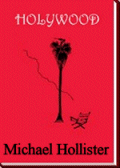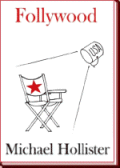Novelist & Critic
HOME PAGE
BIOGRAPHY
MODEL OF METAPHORS
DANEgerus
Patrick Garry, novelist
Apocalypse Now
The Best Years of Our Lives
The Big Chill
Billy Budd
The Bostonians
Casablanca
Citizen Kane
Close Encounters of the Third Kind
Coming Home
Daisy Miller
The Day of the Locust
Dr. Strangelove
Easy Rider
Fail-Safe
A Farewell to Arms
The Front
Gone with the Wind
Good Night, and Good Luck
The Graduate
The Grapes of Wrath
The Great Gatsby
Guilty by Suspicion
High Noon
Huckleberry Finn
Invasion of the Body Snatchers
Key Largo
The Majestic
Meet John Doe
Moby-Dick
The Old Man and the Sea
On the Waterfront
The Player
The Red Badge of Courage
Reds
The Scarlet Letter
The Shrike, based on Miss Lonelyhearts
2001: A Space Odyssey
The Sun Also Rises
Triumph of the Will
The Way We Were
Wise Blood
The Wizard of Oz
Woodstock
The World According to Garp
Peter Carafiol
Free Speech
Metaphor
archetype
Blacklist
Hollywood Novels
McCarthyism
Communist propaganda
2001: A Space Odyssey
One night [the director Ryan Eisley] stood on his front veranda staring up at the moon in the night sky, about a year later. He slipped the letter from Davin into his breast pocket and wondered about the influence of the moon. He had a theory that science fiction had become so popular because so many people now were disappointed utopians without religious faith, projecting their craving for transcendence into space. The aliens out there may be superior to us now, like monstrous divinities even, but we shall overcome some day. Our technology would save us on Starship Blithedale.
He stepped back inside and called to Paula.
"Let's go, we'll miss the launch!"
To escape the choppers pumping through the jungle in his heart, he took her downtown to see Kubrick's new film, a mind trip out of this earthly mess called 2001: A Space Odyssey, written with Arthur C. Clarke. He had phoned Sarah and talked to her about it first so that he would know what to watch for.
Paula loved light shows.
They arrived early, parked near the theater and smoked her little pipe. By now he had taken her to the Fillmore in San Francisco, the Griffith Planetarium here in Los Angeles and to other shows. Tripping on drugs and lights and space, man. Tune in, turn on, drop out. That's what the space man in beads was preaching, the hippie trippy guru of Hollyworld, the Harvard professor of acid Timothy B. Leary, who intended to have his mindblown remains blasted into space by rocket.
In the lobby, space posters were for sale. The ushers and usherettes were dressed in uniforms that resembled those of the space crew members in the film. Paula wanted to sit in the balcony, close to the edge. They got centered, sat down in cushy chairs and lay back high and happy, immersed in classical music through stereophonic surround sound so overpowering that in resonating through his sensory nervous system it reminded him of the feelies in Brave New World.
We are apes slouching around a waterhole in primordial Africa. We screech and jump up and down and scratch ourselves. Another tribe of apes tries to displace us from the waterhole, but we fight back and drive them off, screaming and shaking our hairy fists. One day a dark monolith appears among us out of nowhere, suspiciously phallic after Strangelove, but more like a thick slate tombstone about twelve feet tall. In comic strips getting an idea is indicated by a lightbulb turning on over a character's head. In Kubrick's version, the sun rises over the top of the monolith in close alignment with a new moon. One apeman notices that a bone can be more than a bone. When his imagination separates the image from the literal bone, he can manipulate the image in his mind. That is when he first picks up a bone and starts using it as a tool. A weapon of course! The monolith is the external source of our revolutionary ideas, the mysterious cause of our evolution to the exalted state of astronauts on a space station that rotates slowly through cosmic time to a Strauss waltz, evoking the music of the spheres, the beauty of an orderly universe.
Subsequent scenes convey how routine space travel is by 2001 and how calm, orderly and sterile the high tech world has become. Dating a movie set in the near future would make it ever more erroneous and quaint. We discover another monolith on the moon. The Nazi Strangelove gave Eisley the impression that Kubrick disapproved of current trends in science. In this film, to conduct a space probe to Jupiter, another mad scientist has programmed Hal the super computer with human feelings. Hal gets his feelings hurt and kills all the astronauts on board except one, who disconnects him. Perhaps that is why the artificial looking monolith, as a symbol of reason and technology and apparent progress, looks like a dark tombstone rather than light, the archetype of enlightenment. The monolith appears at moments of significant human discovery, accompanied by triumphant trumpets, but also by some ominous highpitched voices wailing in eerie disharmony. On the moon, the monolith emits such an intolerable highpitched tone, the astronauts fall down before it, overwhelmed.
The final approach to Jupiter is a long psychedelic light show, introduced by a vertical alignment of planets and moons. The dark monolith appears and floats away into a horizontal position perpendicular to the vertical alignment, forming a cross, as if the astronaut is about to become a new savior. He arrives on Jupiter in a red spacesuit and red helmet, totally red from head to toe. He lives out his years alone in a brightly lit neoclassical room evoking the Enlightenment, an age of reason, decorated with classical art. Near death he lifts a finger toward the monolith standing at the foot of his bed, a gesture alluding to the famous painting by Michelangelo in the Sistine Chapel, of God touching the finger of Adam. Yes, the monolith represents God.
Sarah noticed that throughout the picture, the music is upbeat and heroic and German, while the action likewise suggests belief in progress and human evolution to a higher state. Like a purveyor of hallucinogens or a date rape drug, Kubrick seduces his audience along on a trip into illusions that make them feel good, right up to an orgasm of faith in humanity, then he sticks in his monolith, knowing they will feel too good and be too spaced out to realize they got taken. His monolithic deity is totalitarian, inhuman, inscrutable, beyond our influence or understanding and intolerable to us in our present state of evolution. According to Kubrick, like a movie director or a political dictator, God is a supreme illusionist who manipulates and directs us through His scenario. As a mere audience, we have no free will. Monolithic government is fascist. Eisley felt annoyed by this reductive view of human nature, like a propaganda cartoon that encourages pacifist submission to any tyranny, especially if it is Red. As in Strangelove, resistance is seen as futile. In the final image of Kubrick's film, humanity is about to be reborn into another stage of evolution, presumably higher, but the theme of the movie is the heroic climax from Thus Spake Zarathustra, a symphony inspired by the most popular work of the philosopher Friedrich Nietzsche, the advocate of the superman associated with the rise of Nazism.
Hollyworld, pages 84-87.
The
HOLLYWOOD
Trilogy
Three historical novels dramatize Hollywood's global influence from the 1930s to the present age of terrorism, through the life stories of Sarah McCloud, a farm girl from Oregon, and Ryan Eisley, the son of a beer distributor from Ohio.



Click Book to Order